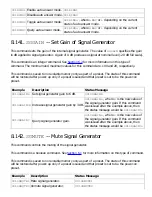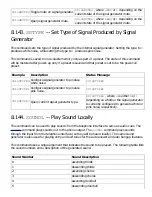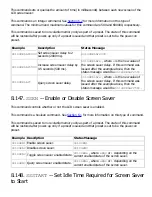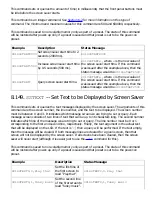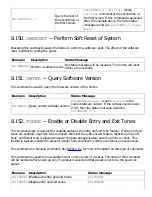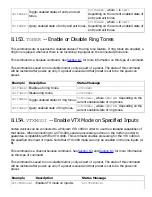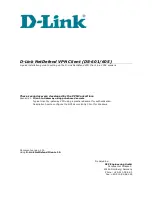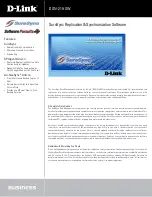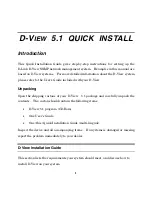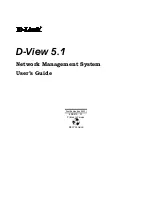
6
quick double buzz
7
long single buzz
The
SOUNDL
and
SOUNDP
were originally implemented to allow users to implement custom passcode
systems that require users calling in via phone to enter a passcode before entering the conference.
The sound commands could be used to provide feedback to the caller as well as the conference.
Example
Description
Status Message
S01SOUNDL0
Play "ascending thirds" sound (same as entry tone) locally.
S01SOUNDL0
8.145.
SOUNDP
-- Play Sound to Phone
This command can be used to play sounds from the telephone interface to serve as audio cues. The
SOUNDP
command plays sounds out to the phone output. The
SOUNDL
command plays sounds
through the input from the telephone interface (so they will be heard locally). The same sound
generator is also used for playing entry and exit tones for the auto answer and auto hangup features.
This command takes a single argument that indicates the sound to be played. The following table lists
the sound numbers and a description of the generated sound.
Sound Number
Sound Description
0
ascending thirds
1
descending thirds
2
ascending chorus
3
descending chorus
4
ascending doorbell
5
descending doorbell
6
quick double buzz
7
long single buzz
The
SOUNDL
and
SOUNDP
were originally implemented to allow users to implement custom passcode
systems that require users calling in via phone to enter a passcode before entering the conference.
The sound commands could be used to provide feedback to the caller as well as the conference.
Example
Description
Status Message
S01SOUNDP1
Play "descending thirds" sound (same as exit tone) to phone
output.
S01SOUNDP1
8.146.
SSDELAY
-- Set Delay Between Screen Saver
Screens













